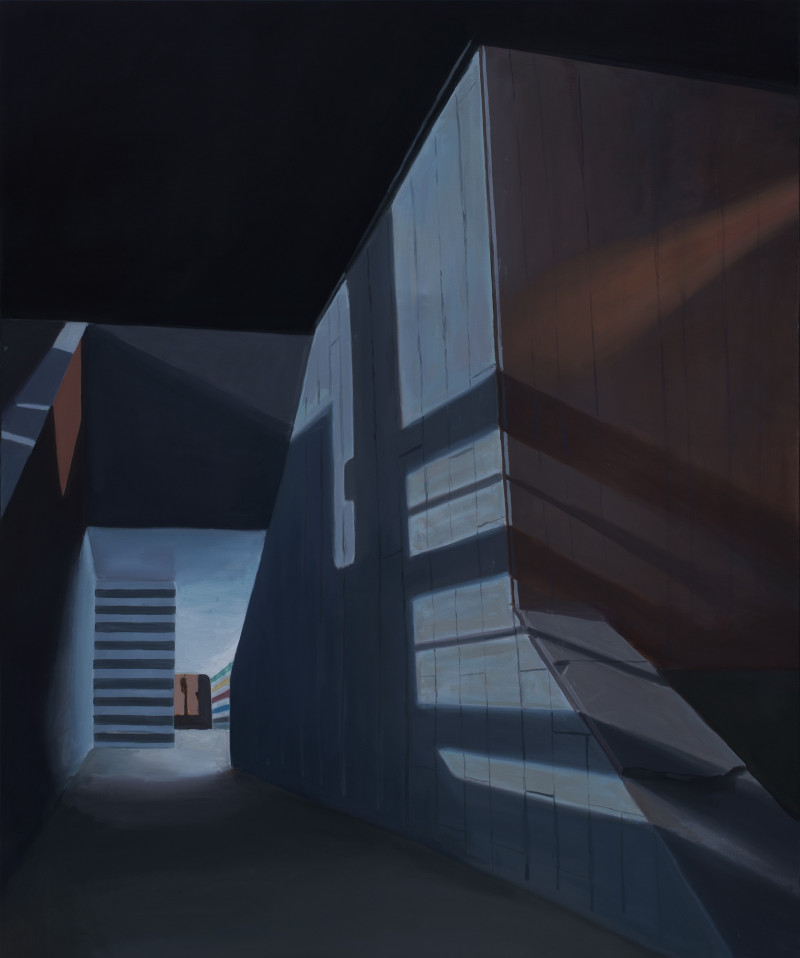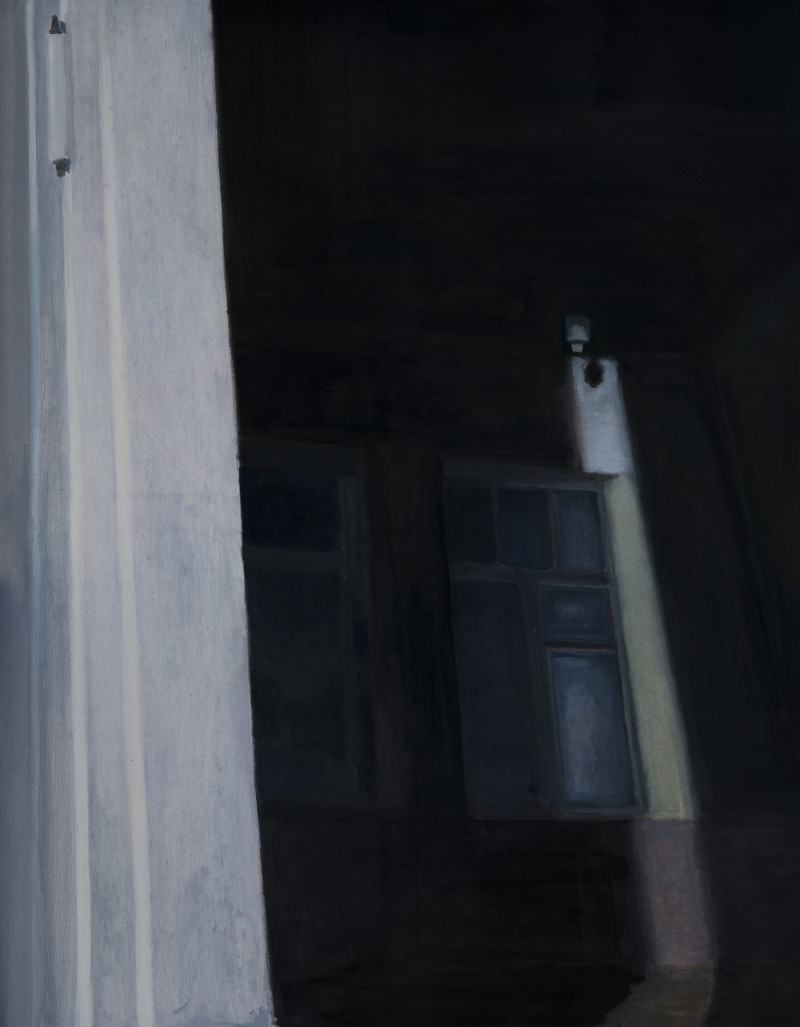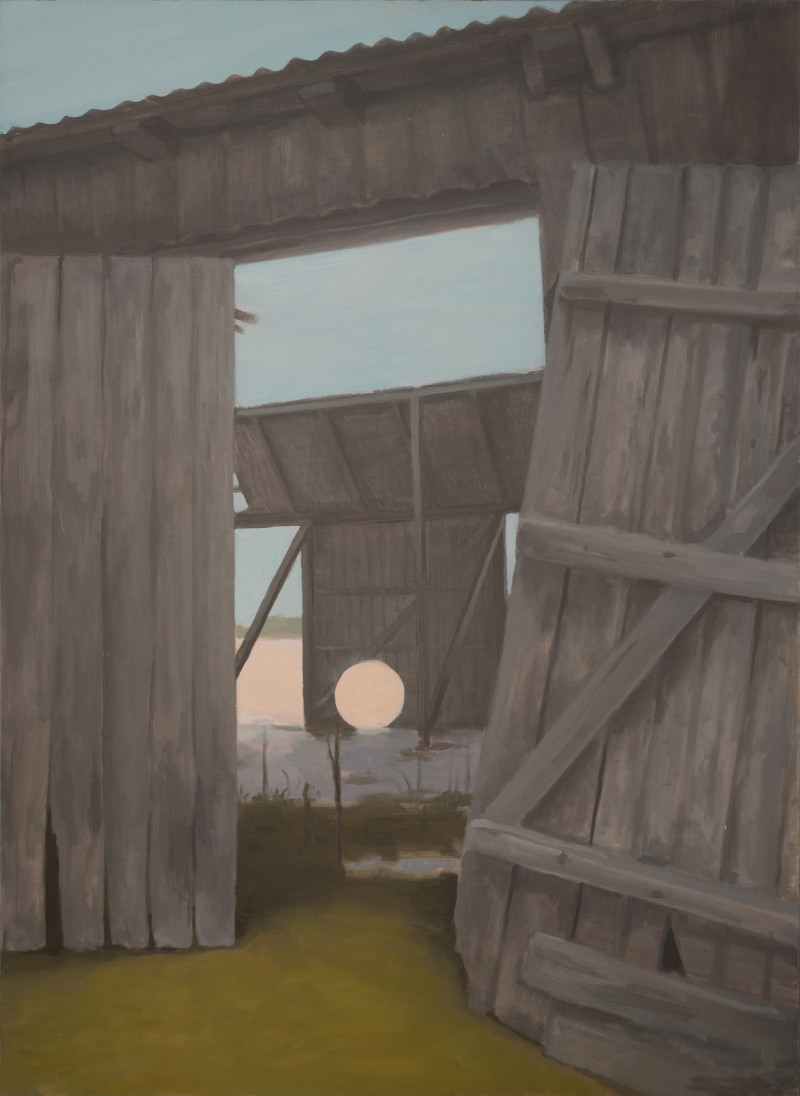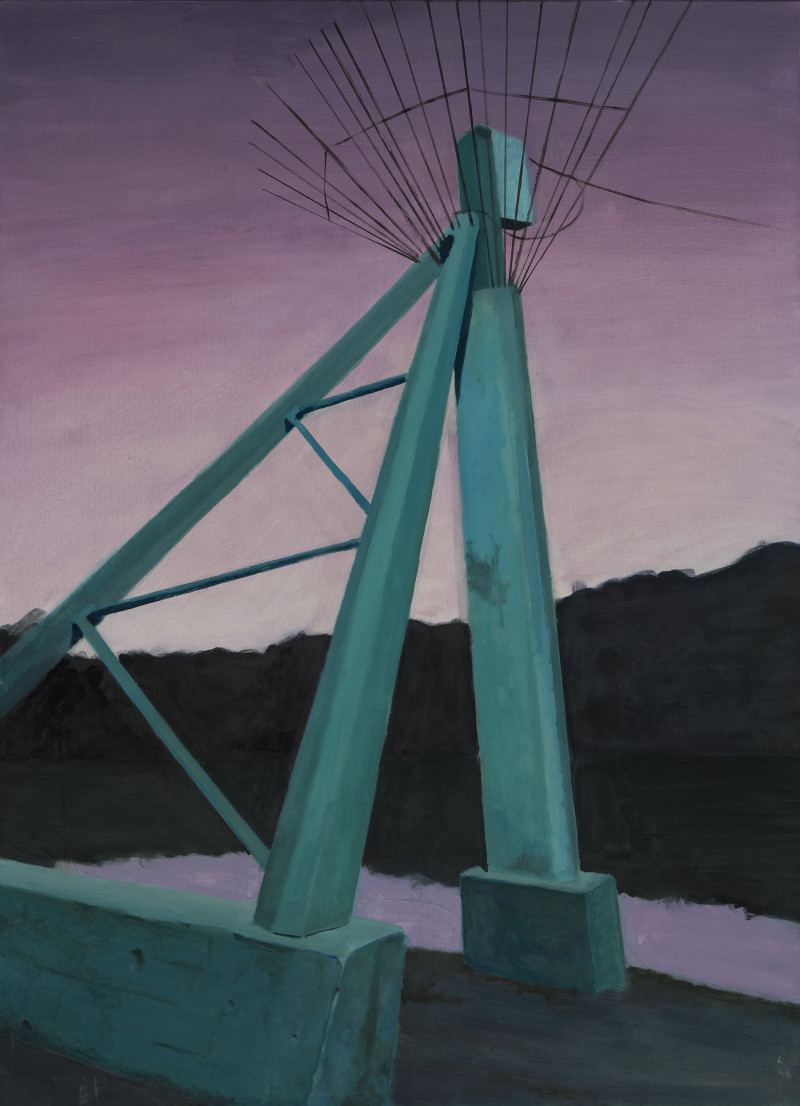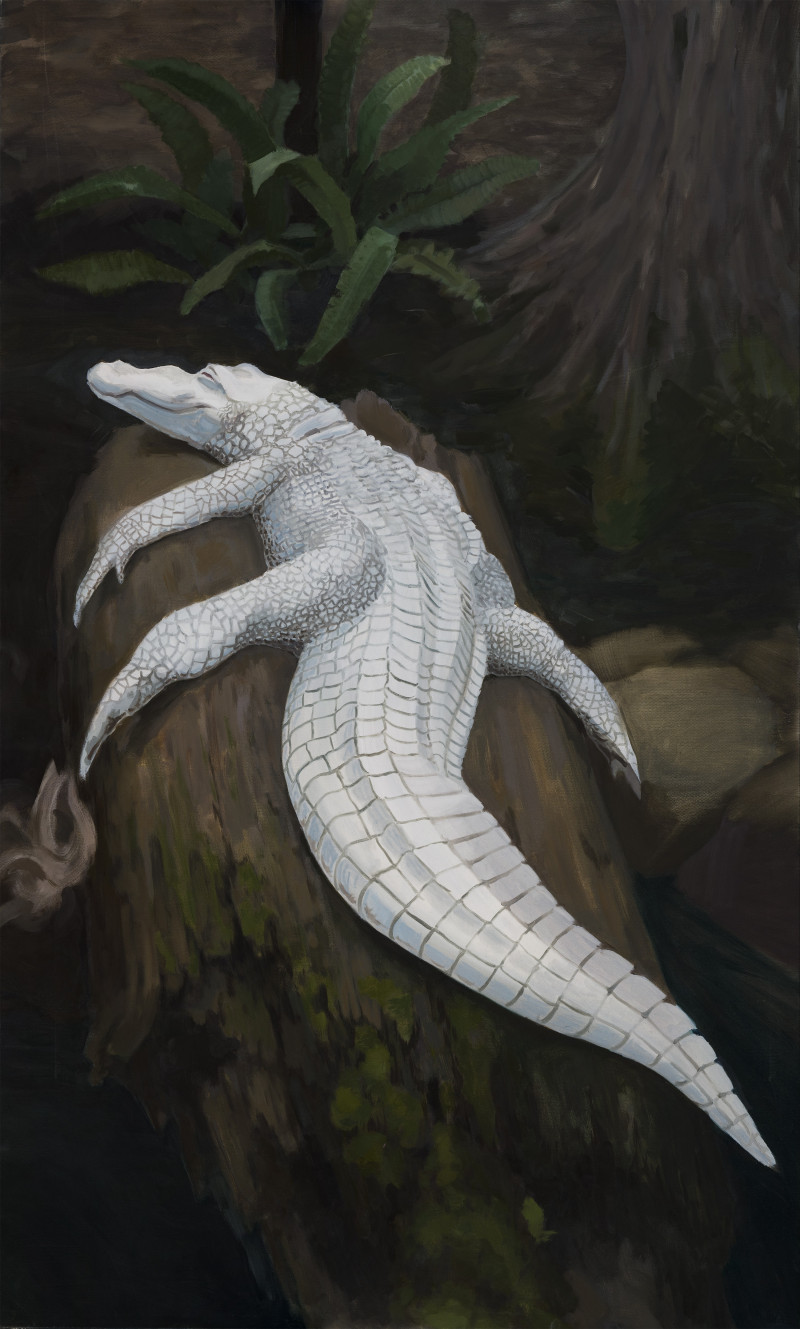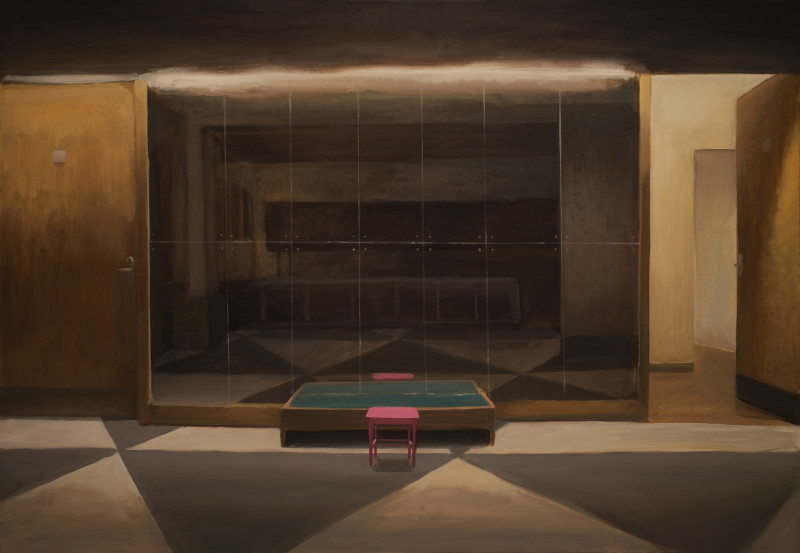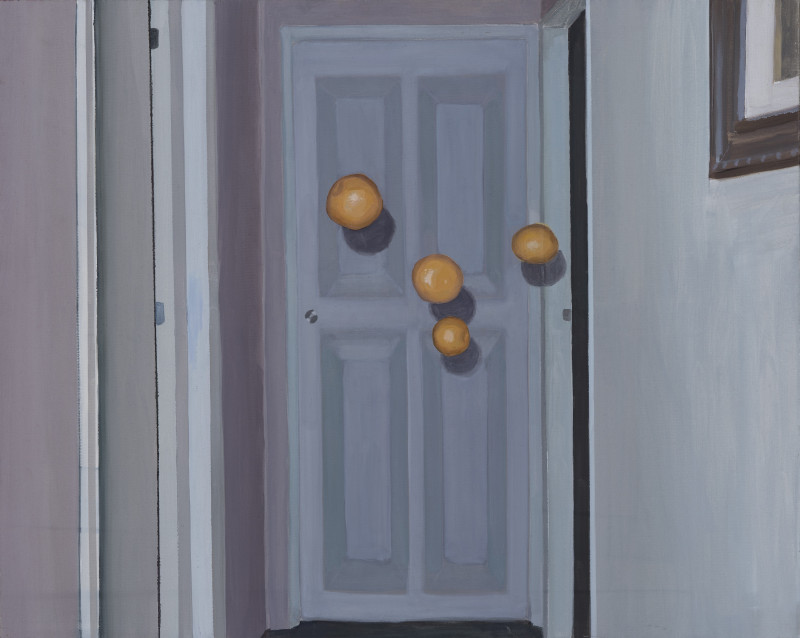The Sky Is Heavier At Night But You're Not Here
Technique: Giclée quality print
Recommended by our customers
More about this artwork
The painting titled "The Sky Is Heavier At Night But You're Not Here" by Mantas Daujotas captures a moody and introspective urban night scene. The artwork is composed with a somber palette of blues and grays, accentuated by touches of warmer tones that suggest flickering streetlights or the last remnants of sunset. The scene seems to take place in an urban alley or passageway, confined by high walls that channel the viewer's gaze toward a distant, brightly colored structure that stands in stark contrast to the surrounding darkness.Striking in this composition are the geometric forms and the play of shadows and light, which create a sense of depth and mystery. On the right, a wall juts into the scene, casting deep shadows and reflecting a diffused light that seems to emanate from unseen sources. This reflected light on the wall and the pavement introduces a subtle luminosity that shifts the mood from stark to contemplative.At the end of the passage, the view opens slightly to reveal a glimpse of an open space beyond—marked by a boxy, striped building. This distant structure offers a hint of something different, something more colorful and perhaps lively, yet it is out of reach, separated from the viewer by the foreboding passage. The placement of this element may suggest themes of separation, distance, or unattainability.The title adds a poignant layer to the interpretation of the scene, implying a sense of longing or loss.
Delivery
Returns
Mantas Daujotas (b. 1993) – painter and musician based in Kaunas. As of 2017 a certified bachelor in painting with a couple of personal and several group exhibitions in a short period of time he’s considered a promising young artist. His paintings showcase a wide range of different subjects, although very rarely a human figure. Dark corridors, spaces stuffed with silence and rays of light, carrying a mystical narrative – these are some of the more representative characteristics of Daujotas’ paintings.
Current authors

